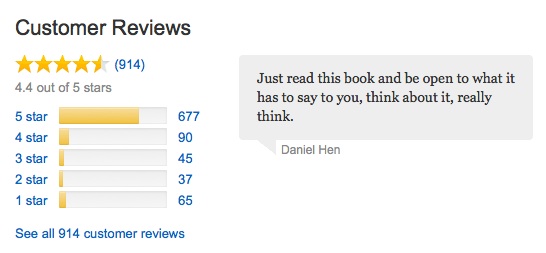24 Oct Emerging
The above picture is a leaf growing on a big plant in my living room. The plant was there before I was born and it continues to live today. However, it was a bit sickly until recently. My wife and I re-potted it into a container that was twice the previous size. We also started to pay attention to it. We had been in the house for a year before we did this and it had grown no leaves. Now it’s sprouting them all the time. Clearly having a bigger pot helped, but I think that paying attention to it helped as well.
Recently I have been thinking a lot about this kind of energy and intention for a number of reasons. A couple of weeks ago my friend Ava gave me the book “E Squared” which asks the reader to do 9 energy experiments over several weeks. Often times we read books, or get messages that we aren’t ready to hear. The ideas contained in them can be understood intellectually, but they don’t affect us on a deeper level. When we get them at the right time, they strike a chord. I think that if she had given me the book a few months ago, my cynicism alarm would have gone off too loudly for me to get the underlying message. However, I had been reading and thinking a lot about ideas related to intention and energy in my own life over the past few months, so I was open, yet still wary.
The author Pam Grout argues that we are part of a vast energy field, and that if we direct positive energy towards that field it will give us what we desire in return. In her formulation it’s that simple. From the very simple skeptic’s point of view the book will be seen as total and utter hogwash. However, as with the books “Think and Grow Rich” (which I have read) and “The Secret” (which I have not), there is clearly something about the idea of creating our own reality that connects with people. On a scientific level, though, this simple idea is difficult to prove. On an anecdotal level, if one looks at the Amazon reviews, of which there are nearly 3000, the evidence is clearly in Ms. Grout’s favor. Further, in terms of my own life, the anecdotal evidence is squarely in her favor as well. The same can be said for my relationship to Dr. John Sarno and his work. While skeptics pick apart his ideas, and he found no acceptance among his medical peers, his Amazon reviews paint a very different picture.
When I first wrote about how important the reviews of Dr Sarno’s book were as a source of data a year ago, there were 572 reviews. Now there are 914 reviews. While it would be easy to dismiss this information because it has not been not gathered in a “controlled” way, the numbers are pretty clear. Astoundingly, of the 914 reviews for the book; 677 are 5 star, 90 are 4 star, 45 are 3 star, 37 are 2 star and 65 are 1 star reviews. This means that 89% of the reviews are 3-5 star. 11 percent are 1 or 2 star reviews. This is in line with the results from a year ago, percentage wise.
I use this space to write about my own thoughts. In some ways, it’s like a public journal. I want to be clear that I am not comparing Dr. Sarno’s work to Pam Grout’s. Instead I am making a point about how powerful belief is in regards to reality. If we see something ourselves, even if it is single anecdotal piece of evidence that goes against what larger studies tell us, we are inclined to believe what we see. While I am making a film about Dr. Sarno, and I am a very firm supporter of his work, I in no way intend to say that all of my opinions or ideas are in lockstep with his. At the same time I also believe that he is a brilliant doctor and I have more respect for him than almost anyone I can think of.
I tend to repeat a lot of the same themes as I dig around and try to make more sense of the ideas that I am scratching at, so please forgive my self-plagiarism. Any scientific study that deals with emotions is going to be on shaky ground. This is not only because our emotions are extremely fluid in our own lives, but they are also tied directly into the slipstream of our culture. The racism of the 50’s looks very different from the racism of today in terms of our own cultural perspective on things.
Often times, we are deeply unconscious of how the frames that we were first exposed to shape our view of reality. They are like a dog’s “cone of shame” that we can’t see around. There are reams of data that are now coming out that connect our current view of the world to the messages we picked up in the first five years of life. Dr. Gabor Mate is extremely good at explaining these ideas. He also has his detractors.
During an email exchange about our film, Dr. Mate suggested that I read Eckhart Tolle’s “A New Earth.” The book helped me to see how the constant chatter inside my head is not “who I am”. Instead, the consciousness of that chatter is the true self. Tolle and Mate would argue that the chatter is the ego, which is more closely aligned with those subtle messages, cues, and judgements, that shape help to determine how we react to the world around us. These elements of our personality, that often feel fixed, are actually quite changeable.
One of the problems with science is that has trouble getting “clear data” from complex situations. As alluded to above, Dr. Mate has his detractors who argue that it’s overly simplistic to say that the first five years of our life play a role in our addictions. Dr. Steele – who calls Dr. Mate’s theories “seductive (but dangerous)” – argues that if childhood trauma caused addiction then there would be even more addicts and alcoholics. However, he misses the point of Dr. Mate’s complex view of mind body interaction completely. I think Dr. Mate is instead attempting to illuminate the importance of these experiences because, for the most part, Western culture has largely shunned the connection between emotional factors and the body, especially in the last 70 years. Rather than saying early childhood experience is the cause of addiction, he is saying that it is a major causal factor. If we ignore it, then we limit our ability to solve the problem.
In “When The Body Says No,” Dr. Mate makes this same argument in relation to the complex nature of causation. He points out that we often say, “smoking causes lung cancer.” However, a very small percentage of people who smoke get lung cancer. This is not to say that smoking isn’t a causative factor in lung cancer. However, we can see that the complex relationship between mind and body plays a role as well. If we do scientific studies looking for a single causative factor, like smoking, then we might find a connection between smoking and cancer. However if we look at more complex sets of data we might find more confounding and complex answers. (As Jonah Lehrer has written about scientific study: “All those extra details end up confusing us; the more we know, the less we seem to understand.”)
This is exactly what Dr. Sarno is talking about as well. However, he and his ideas have largely been rejected by the medical community in much the same way over the past 40 or so years. As he walked through the “sound stage” of ideas that held medical sway during his early career, the only thing he saw was a mechanistic approach to the problem of pain. However, despite assertions to the contrary, when he looked behind “the set walls” he saw that there was no scientific evidence on which to build a foundation for this approach. Taking a closer look at his patients as a whole, he found that the structural diagnosis as the cause of their pain often didn’t correspond with what he knew about the structural physiology of the body and the nerves. For example, they might have been told that they had a herniated disc which should indicate pain in one area, but the pain was in several other places as well as the indicated site. Many times the structural diagnosis in no way corresponded with the pain. When he looked a little deeper, he found that the vast majority of his patients had many other health issues that had a more readily accepted mind body basis; things like colitis, rheumatoid arthritis, migraines, etc. It wasn’t a big leap for him to see that our emotions might be a causative factor in pain syndromes as well. Simply recognizing this connection led to a dramatic turn-around in his ability to help his patients overcome their bad backs, tennis elbows, and frozen shoulders. Unfortunately, because his ideas didn’t comport with overwhelming medical and cultural biases of his time, the ideas did not resonate with his peers.
Cultural norms are extremely difficult to challenge, This is also true of institutional and structural norms. Those who benefit from the norm, via status or power, rally troops to fight off the invader. Yesterday I wrote a post about how ants respond en masse whenever their colony is breached. It seems as if they act as one organism in this situation. This also seems to be the case when overriding, social, medical, or religous paradigms are challenged as well.
When we zoom in towards the ego this same analogy is apt. Imagine for a moment being challenged by a friend, lover, or colleague, especially if they are challenging a position that affords us privilege or power. If we have an ego attachment to an idea, we will fight. Perhaps the challenge comes without anger or malice. Even in this case, think about how the ego reacts. If we pay close attention to “the chatter” when we are challenged, we’ll often find ideas swarming at us. These usually include ways to defend ourselves. I think we rarely listen in ways that challenge our egos. Next time someone puts you down, or accuses you of some misstep, pay attention to your thoughts for a moment. I assure you that you’ll be surprised.
Circling back to the idea of energy, I read Grout’s book with as much openness as I could muster. Still, I couldn’t help but be a little bit skeptical about some of the claims and stories. As with Dr. Sarno’s book, some of the stories seemed hard to believe. However, having spent 10 years talking to people who felt that Dr. Sarno’s book changed their life, I found it easier to consider the relevance of what the author was getting at. Further, over the past 6 months I have been able to quell a great deal of my own negative thinking, and I have seen some pretty amazing results.




No Comments